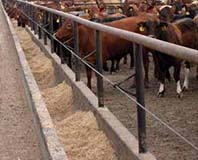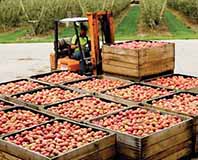Farm inputs
Anything moved onto your property can be a source of pests and diseases for livestock and plants. Monitor animals or plant materials that enter the property, as well as sources of water, feed and fertiliser. More
The best defence against pests and diseases is to implement sound biosecurity practices on your farm. Quick and simple measures built into everyday practice will help protect your farm and your future.

Anything moved onto your property can be a source of pests and diseases for livestock and plants. Monitor animals or plant materials that enter the property, as well as sources of water, feed and fertiliser. More
If it can move, it can carry diseases, pests and weeds. That’s why people, vehicles and equipment pose a high biosecurity risk and should be managed accordingly. More
Good on-farm hygiene reduces the risk of spreading pests and diseases. Implement simple hygiene practices for feed and water, product packaging, storage facilities, livestock husbandry, waste materials and plant propagation activities. More
Feral animals and weeds can both pose a health risk to livestock and damage crops. Ensure you monitor and manage these widespread risks to your business. More

Responsibility for biosecurity doesn’t end when plant products or animals leave the farm gate. The measures in place on your property support biosecurity in your region. More
Ensure staff are well trained, that you can trace where animals or plants have come from and where they go, and keep records of purchases, sales and movements. More